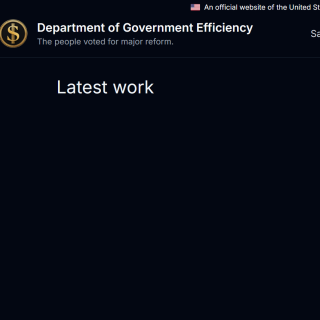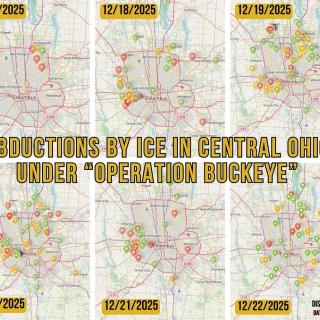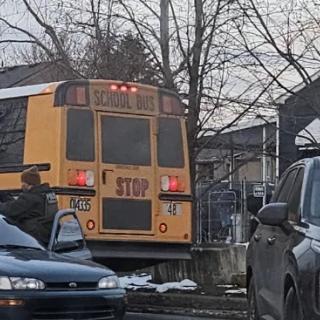Advertisement
By Bob Fitrakis and Jonathan Beard
Hockey season starts this week. Fans cheering for the Blue Jackets in Nationwide Arena and those outside unable to afford tickets, are likely unaware that their tax money bailed out four of the wealthiest families in the city for their losing investment in the team.
Despite voting not to subsidize the Arena or our hockey team, Columbus taxpayers are being duped by a convoluted financing scheme that publicly subsidizes the Arena.
Whose Arena – Your Arena!
Despite voting NO in May 1997 – citizens of Columbus, Ohio, helped purchase and now subsidize the Nationwide Arena. The Columbus City Council decided to defer to Mayor Michael Coleman and purchase Nationwide Arena, pledging future casino tax revenue funds – already promised to the taxpayers of Columbus as the way to make our city, and particularly the west side, a better place to live.
Oddly, the Columbus Dispatch reported that “the vote authorized the administration of Mayor Michael B. Coleman to pledge a growing share of the city’s casino tax revenue to help the Franklin County Convention Facilities Authority purchase [of] Nationwide Arena for $42.5 million, and to pay millions more to operate the arena through 2039.”
So while the citizens of Columbus will be indirectly paying for the arena and subsidizing its operations, they will not own the arena. Still more startling, the original construction cost of the arena, completed in September 2000, was $175 million. The cost of building an arena today is $223 million. So why the Arena sold for only $42.5 is anybody’s guess.
When taxpayers overwhelmingly voted against public funding of the arena in 1997, many were concerned that it was a bad investment. The arena’s recent sale price underscores that assessment and the people’s wise vote. How the city helped purchase an arena for the Franklin County Convention Facilities Authority, and then agreed to subsidize it with city revenue is unfathomable.
Why this issue did not come back to the people of Columbus for a vote is unconscionable and undemocratic.
The greatest irony is that people of Ohio voted to place the casino in the Arena District. The people who own the Columbus Blue Jackets, the arena’s hockey team, forced the casino to relocate to Columbus’ west side.
Now the money generated from the casino to fund the Nationwide Arena, in a district considered “too good” of a location for a casino, does nothing for the west side of Columbus.
The deal appears to be little more than a welfare check to the wealthiest families in Columbus who own the Blue Jackets: the McConnells, Wolfes, Pizzutis and Cranes.
The scam
Does this so-called “public/private partnership” represented by the Nationwide Arena bailout, serve the public interest as the Columbus City Council insists? Or is the deal an illegal money-laundering scam?
After years of hiring consultants and conducting private meetings concerning the Blue Jackets’ financial losses, on October 2011 the Columbus City Council approved Ordinance 1596. The ordinance authorized a contract to fund the Nationwide Arena bailout. The Council cited the economic development impact of the Arena as its rationale for the “wealthfare” checks given to four wealthy families, ignoring the financial distress of the Blue Jackets franchise.
Columbus Council President Andy Ginther admitted City Council never reviewed financial records or financial projections of the Blue Jackets and the Arena prior to committing nearly a quarter of a billion dollars of public funds into a “wealthfare” subsidy. Instead, Council relied on a report by consultant Stephen A. Buser, paid for by the Columbus Chamber of Commerce.
Ignoring the obvious conflict inherent in a study by the Columbus Chamber supporting money to wealthy families, City Council accepted Buser’s analysis.
The Buser report emphasized the positive economic impact of the Arena. The report conceded that “the estimates … do not identify or net out portions of Arena District tax revenues that are the result of existing businesses that relocate to the Arena District from other parts of the region, as distinct from new businesses that generate net new tax revenues.”
This disclaimer was drowned out by Buser’s enthusiasm for the project, as he repeatedly used phrases such as, the economic development “can only be described as remarkable” and “can only be described as exceptional.”
Secret deal
In fact, a survey by the Columbus Coalition for Responsive Government assessing Buser’s disclaimer found that approximately one-third of the Arena District businesses were in the arena district prior to the construction of Nationwide Arena, and another third of the current Arena District businesses relocated from other areas in Columbus into the District.
The private nature of Arena bailout deliberations apparently became a cause of concern since Section 5 of the ordinance passed by Council contains a curious provision, stating: “it is hereby found and determined that all formal actions of this Council concerning and relating to the adoption of this ordinance were adopted in an open meeting of this Council, and that all deliberations of this Council and of any of its committees that resulted in such formal action, were meetings open to the public, in compliance with all legal requirements including Section 121.22 of the Ohio Revised Code.”
The Free Press naturally wondered if all the meetings during 2010 and 2011 had been declared public meetings through the ordinance. On August 28, 2013, the Free Press made a records request of City Clerk Angie Blevins, asking for a list of such open public meetings held between January 1, 2008 and October 15, 2011, concerning and relating to the adoption of the ordinance. Also requested were “copies of minutes, notes, summaries from all public meetings held between January 1, 2008 and the Council passage of Ordinance 1596-2011, which discussions of the financial difficulties of the Nationwide Arena and/or Blue Jackets, which led to the authorization of a contract between the City, County, and CAM [Columbus Arena Management].” By press deadline, no information concerning those public meetings referenced in the ordinance has been provided.
How the deal was done in six easy steps
An interesting article appeared this year in The Hasting Constitutional Law Quarterly written by David Ebersol entitled “Democracy in Ohio” Ohio’s Fiscal Constitution and the Unconstitutional Nationwide Arena Deal.” The article makes a detailed case for the unconstitutionality and illegality of the Columbus City Council’s Arena bailout.
There are six steps involved. The first three raise the money, the last three transfer the wealth to the wealthy.
The Franklin County Convention Facilities Authority (CFA) issues bonds to Nationwide allowing them to raise (borrow) at least $44 million. These proceeds end up being used primarily to purchase the Arena in step four.
The CFA turns around and enters into a lease agreement and sublease agreement with the City of Columbus and Franklin County. The government entities agree to give the casino tax revenue that should be going to the City and County to the CFA. Under this bizarre money-laundering scheme, the City and County lease from the CFA and agree to pay “rent,” that is, the casino tax money. Then, under a sublease agreement, the City and County declare themselves the lessors and transfer the Arena back to the CFA. Although it is hard to believe, the CFA cuts the deal of the century and rents the Arena back by giving $10 to the City and County.
Its coffers filled with casino tax revenue, the CFA next borrows $10 million at an interest rate of 1% from the State of Ohio. Five million of this loan will be forgiven by Ohio state government if timely payments are made by the CFA.
The flush CFA then purchases Arena from Nationwide Arena LLC for $42.5 million.
After purchasing the Arena with public funds, the CFA gives use of the publicly-owned Arena to the Blue Jackets, free of charge.
Under the new agreement, the CFA is responsible for managing the Arena and for its upkeep. In order to do this, it creates the new group, Columbus Arena Management (CAM).
Thus in six easy steps, Nationwide gets bailed out for a bad investment in the Arena, and the four families who own the Blue Jackets get a huge subsidy by not having to rent an Arena for their hockey team. The tax money that could have flowed to re-developing low income neighborhoods and abandoned houses throughout the city is now earmarked to maintain the Arena.
Illegality of the Arena deal
The Ohio Constitution in Article 6, Section 6 states that, “No law shall be passed authorizing any county, city, town, or township by vote of its citizens, or otherwise, to become a stockholder in any joint stock company, corporation, or association, whatever; or to raise money for, or to loan its credit to, or in aid of, any such company, corporation, or association….” In 1965, Section 13 updated the Ohio Constitution and allowed economic development bonds to be issued for public purposes as long as “moneys raised by taxation” are not used to finance the bond issue, meaning to repay the debt.
In 1984, the Supreme Court of Ohio told us exactly what this means. Ohio cities and municipalities are forbidden to subsidize for-profit businesses with below market arrangements financed with “moneys raised by taxation.” Shockingly the casino tax is a tax, and the Blue Jackets are a for-profit business.
The Supreme Court case State ex rel. Ryan v. City Council of Gahanna suggests that the Arena financing deal is illegal money laundering. In another case, State ex rel. Saxbe v. Brand, the Ohio Supreme Court found that State of Ohio money lent through a commission constituted the lending of the State of Ohio’s credit, thus making the Arena deal likely illegal.
Convention facility authorities like Franklin County CFA fall under this statute and ruling. It appears that the Arena deal is illegal under the Ohio Constitution.
No transparency in partnership
One of the other interesting items to fall out of the Arena deal, was how quickly taxpayers lost control of the publicly-funded Arena.
Part of the plan approved by Council and the County Commissioners, called for the incorporation of CAM, a private nonprofit created to manage the publicly-owned Nationwide Arena. CAM ultimately was formed by, and ultimately reports to, the Franklin County Convention Facilities Authority (a public entity).
CAM has a four member Board of Directors comprised of a representative of the Franklin County Convention Facilities Authority (Executive Director Bill Jennison), The Ohio State University (Vice President Jeff Kaplin), The Blue Jackets (President Mike Priest), and Nationwide Realty Investments (President Brian Ellis).
CAM canceled its first scheduled meeting in October, 2012, due to questions about whether it would operate in public, subject to open meetings act requirements that apply to public entities. Mayor Michael Coleman, County Prosecutor Ron O’Brien and the County Commissioners insisted at the time that meetings and records of CAM be public, since public dollars were involved.
However, the CAM Board ultimately adopted a policy where it agreed to one public meeting a year – the meeting at which its annual budget would be adopted. The remaining meetings are private.
The County Commissioners and Mayor Coleman had sought more transparency, but the CAM refused to provide it. Thus, a publicly-owned project whose financing is paid entirely by public funds, largely operates out of the public eye. While local officials were reported to be unhappy with that outcome, the fact remains that a quarter billion dollars in public funding is going to an organization that refuses to provide beyond the bare minimum of transparency.
What started out as a Public/Private Partnership has essentially ended in a one-way flow of money from the public, with very little information or accountability coming back from the private board.
This model appears to be gaining in popularity in Ohio, as referenced by Governor Kasich’s JobsOhio, which similarly seeks to be exempt from public scrutiny (and at which numerous conflicts of interest were recently identified by the Ohio Ethics Commission). We note also the proposed public/private partnership for Columbus City Schools, should Issue 50 pass, where the partnership would have influence over as much as $250 million in taxpayer dollars. Each of these instances indicates the level of public accountability in a public/private partnership should be clarified up front, before the dollars start flowing.
On the surface, an analysis of the bizarre Arena deal suggests that it is an illegal money-laundering “wealthfare” scam, in violation of Ohio’s Constitution.




